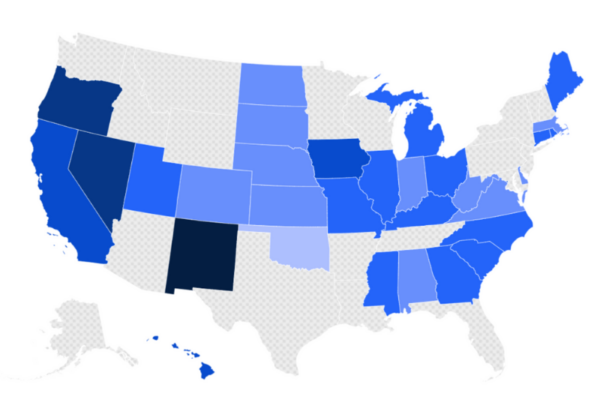Updated 12/04/2025
Chronic absenteeism remains a major challenge for schools and districts nationwide. Although many states are making progress in reducing chronic absenteeism—defined as students missing 10 percent or more of the school year—attendance levels have not returned to their pre-pandemic baseline, which was already high in many places.
FutureEd has developed a tracker monitoring chronic absenteeism rates from the last pre-pandemic school year, 2018–19, through 2021–22, 2022–23, 2023–24, and now 2024–25.
To date, 29 states have released chronic absenteeism data for the 2024–25 school year. Most states reported improvements or held steady from the previous year, with Iowa showing the largest decline—nearly six percentage points. Only three states (Colorado, Oklahoma, and Mississippi) reported increases, with Mississippi’s rate rising by three percentage points, returning to its pandemic peak. Still, no state has fully returned to pre-pandemic levels, though Alabama is now within just one point.
Since the pandemic-era high point in 2021–22, most states have recorded steady year-over-year improvements. Of the 44 states and the District of Columbia reporting 2023-24 data, all but six saw further declines in chronic absenteeism, with rates dropping by an average of about 2.5 percentage points. Nevada and New Mexico made the largest gains, each reducing absenteeism by roughly nine percentage points.
The difficulties states are having in getting absenteeism rates down to pre-pandemic levels reflects both persistent challenges and the lasting impact of Covid. Chronic absence often points to barriers such as untreated health conditions, unreliable transportation, or unmet mental health needs, but the pandemic also changed how many students and families think about school, undermining the routines and relationships that once supported more regular attendance. Rebuilding those relationships will be as important as addressing practical barriers, and lasting progress will require more than incremental gains. It will take sustained effort, stronger supports, and, importantly, timelier data that can identify problems early. In many cases, year-end figures arrive too late to be useful.

